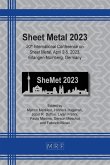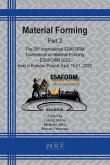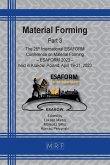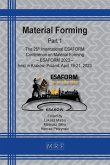The introduction of numerical methods, particularly finite element (FE) analysis, represents a significant advance in metal forming operations. Numerical methods are used increasingly to optimize product design and deal with problems in metal forging, rolling, and extrusion processes. Metal Forming Analysis describes the latest and most important numerical techniques for simulating metal forming operations. The first part of the book describes principles and procedures and includes numerous examples and worked problems. The remaining chapters focus on applications of numerical analysis to specific forming operations. Most of these results are drawn from the authors' research in the areas of metal testing, sheet metal forming, forging, extrusion, and similar operations. Sufficient information is presented so that readers can understand the nonlinear finite element method as applied to forming problems without a prior background in structural finite element analysis. Graduate students, researchers, and practising engineers will welcome this thorough reference to state-of-the-art numerical methods used in metal forming analysis.
Table of contents:
1. Mathematical background; 2. Introduction to the finite element method; 3. Finite elements for large deformation; 4. Typical finite elements; 5. Classification of finite element formulations; 6. Auxiliary equations: contact, friction, incompressibility; 7. Thermo-mechanical principles; 8. Sheet metal formability tests; 9. Steady state forming problems; 10. Forging analysis; 11. Sheet forming analysis; 12. Recent research topics.
Numerical methods, particularly finite element (FE) analysis, are used increasingly in metal forming operations. This book describes the most important numerical techniques for simulating metal forming operations. The first part describes principles and procedures. Remaining chapters focus on applications. Numerous examples and worked problems are included.
Thorough reference to numerical techniques used for simulating metal forming operations.
Table of contents:
1. Mathematical background; 2. Introduction to the finite element method; 3. Finite elements for large deformation; 4. Typical finite elements; 5. Classification of finite element formulations; 6. Auxiliary equations: contact, friction, incompressibility; 7. Thermo-mechanical principles; 8. Sheet metal formability tests; 9. Steady state forming problems; 10. Forging analysis; 11. Sheet forming analysis; 12. Recent research topics.
Numerical methods, particularly finite element (FE) analysis, are used increasingly in metal forming operations. This book describes the most important numerical techniques for simulating metal forming operations. The first part describes principles and procedures. Remaining chapters focus on applications. Numerous examples and worked problems are included.
Thorough reference to numerical techniques used for simulating metal forming operations.








